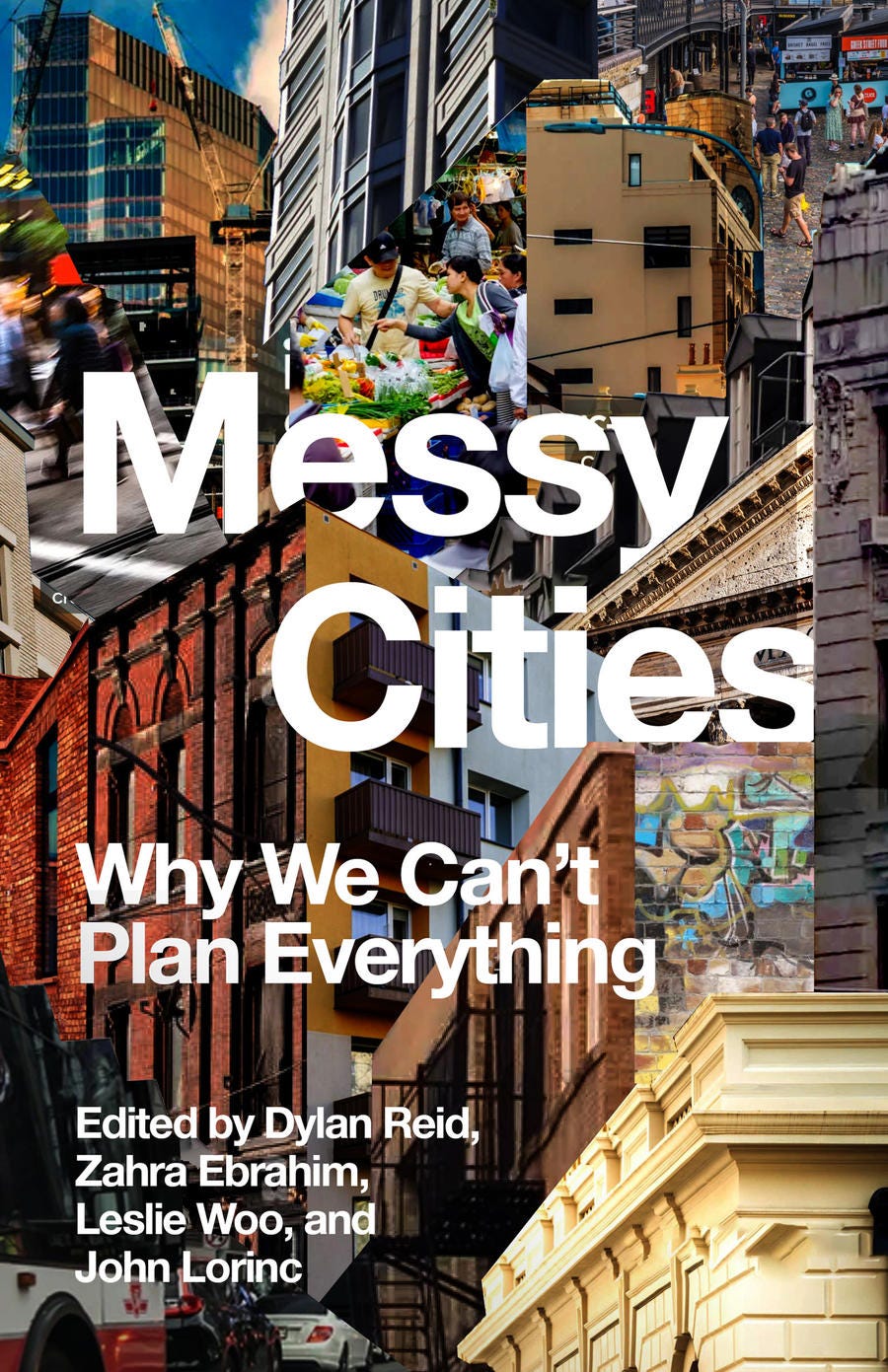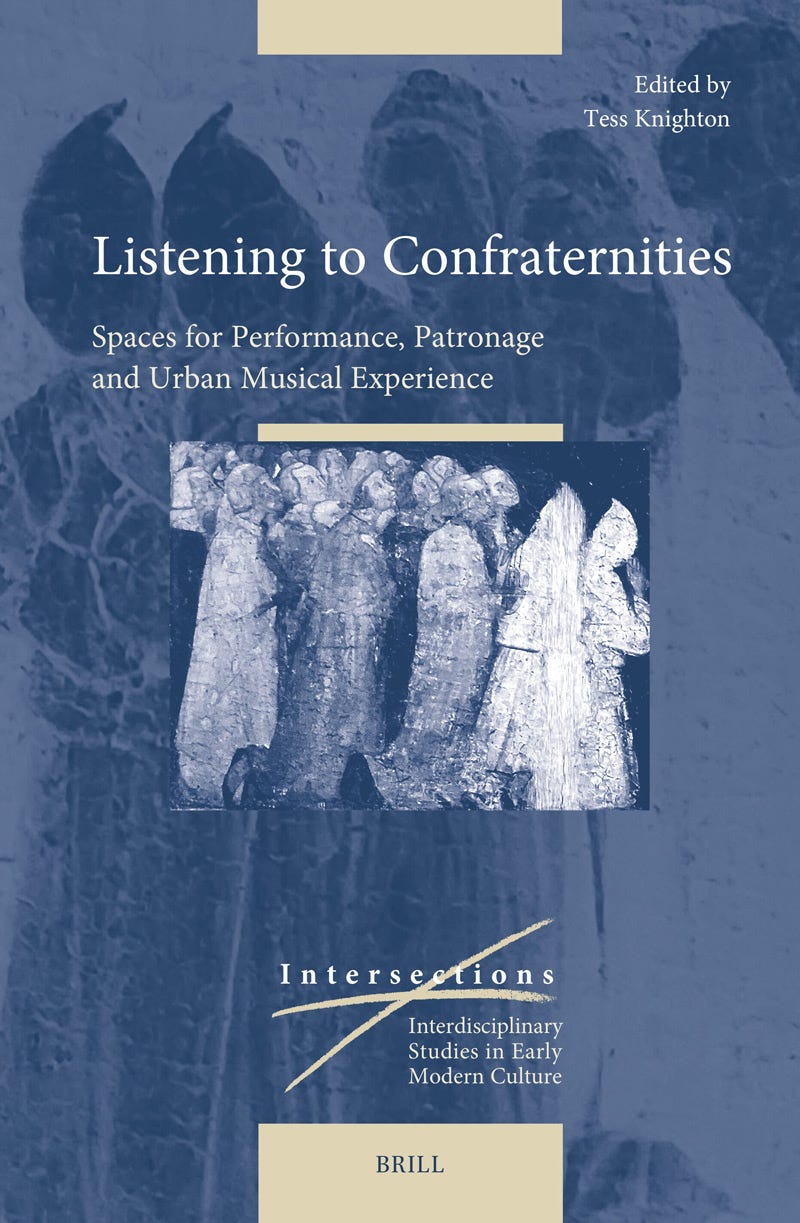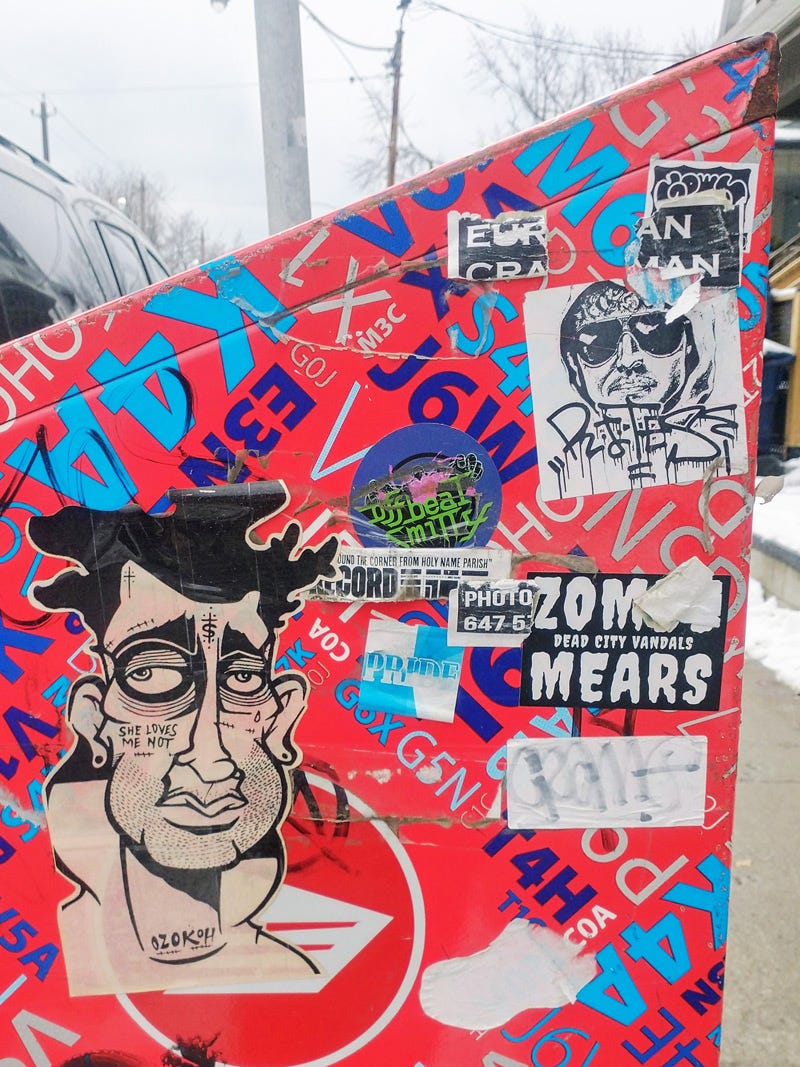Messy Cities
Some thoughts on messy urbanism to whet your appetite for a whole book about it.
December 2024–January 2025
A long-standing project – one that helped inspire this newsletter – is coming to fruition! Here’s the story of the origin of the new book about messy urbanism that I co-edited – coming soon to a bookstore near you – along with some musings about examples of messy urbanism.
The Sneak Peek
After Los Angeles urbanist James Rojas came to Toronto for a conference in 2007, he wrote to Spacing about how much he’d loved the city. But he loved it, not for its reputed orderliness (which had long faded by then), but rather for what he called its “messy urbanism,” the chaotic streets with streetcars, cyclists, motorists, and crossing pedestrians all mixed together yet respecting each other’s space, fruit stands spilling out over sidewalks, and sleek modern buildings sprouting up beside ramshackle old ones. “There’s a sort of less-than-manicured quality to the whole thing,” he wrote, “and coupled with a huge diversity of people, the city ends up feeling gloriously messy, in a functional and walkable way.”
When I read Rojas’ piece, I felt an instant spark of recognition. When we started Spacing magazine in 2002, I had recently moved from a fairly staid mid-town neighbourhood to a decrepit former industrial zone just west of Toronto’s downtown that was just beginning to undergo a transformation. I still remember vividly the experience of walking out from my new place the day after I moved in, to the clamorous intersection of Spadina and Queen streets. A streetcar was clanging its bell, congested traffic was trying to inch forward, and pedestrians of a kaleidoscope of ages and appearances filled the sidewalks. Scaffolding inched its way around construction cranes, graffiti covered any blank wall space, and tattered posters covered the surface of any pole. In the face of this chaotic, vibrant scene, I felt an instant wave of happiness, the satisfied feeling that I was where I belonged.
I also began noticing other people expressing the same pleasure in a vision of a vibrant, colourful, and diverse urban life. I explored this idea of messy urbanism in a big article in Spacing in 2010 (PDF). But the idea kept developing and growing, both in my own mind and also in evolving trends in our understanding of cities and in the ways people shape them. In 2019 I started an MFA program in creative non-fiction with the idea of developing a book about it. But once I graduated, I became overwhelmed as I realized how many different elements could – indeed, should – fall under this banner, and that in many cases I was not really the right person to write about them.
I decided that the best way to approach the book was not for one author to try to present a comprehensive treatment, but rather – in alignment with the messy principle – for many authors to evoke the idea, opening the concept out rather than wrapping it up. So I approached my Spacing colleague John Lorinc, who I knew was also a fan of the concept, and who edited anthologies about urban issues for Coach House Books. He got on board enthusiastically, Coach House agreed, and we recruited two co-editors, Leslie Woo and Zahra Ebrahim, who brought their amazing networks and store of urban knowledge and experience to the book.
And now it’s on its way! It’s in production at the moment, and Coach House Books will release Messy Cities: Why We Can’t Plan Everything in June. We have an amazing array of contributors from around the globe as well as from here in Toronto, writing about a remarkable array of topics. You can pre-order the book from Coach House, if you are interested, or wait for what we promise will be a fun launch party in June.
What’s Up
At the end of November, I was excited to receive my copy of the book Listening to Confraternities, which includes my latest history article, “Performing Poetry at Rouen’s Puy of the Immaculate Conception.” The book is a collection of essays about the soundscape of the brotherhoods that formed the backbone of civic society in the late medieval and early modern eras. For most of the contributions, that means music, but I wrote about the soundscape of the poetry competition in sixteenth-century Rouen that I have long studied. In it, local poets recited their poems in praise of the Virgin Mary to a large audience in the hall of a monastery in the centre of the city – creating a unique soundscape of spoken verse. It was, I suggest, a way of publishing – making public – their poems that likely reached as wide an audience as if their verse was printed in a book. It was really stimulating to look at material I already knew, but from the completely new perspective of sound – I learned a lot more about something I thought I already knew well.
Quotable
“A city that no longer accommodates wandering no longer accommodates wondering.”
- Shaan Sachdev, “Baudelaire Would Be Run Over in New York City Today” (New York Times, gift link)
The ability to wander is a way to experience the city messily, to make the city’s spaces messy in one’s eyes. Leaving the expected and beaten path, taking indirect routes, ignoring the directions of maps physical or electronic, poking one’s nose in corners and byways – all these erratic meanderings break up the structures expected of our movement through the city and gives us an opportunity to see the city with new eyes, spotting the curiosities and novelties we might overlook or ignore in more purposeful travel. They bring us out of ourselves, and bring the city out of itself.
The curmudgeonly article this quotation is from kind of ignores that the nineteenth-century city was also perilous for pedestrians, as the final quotation from Baudelaire reminds us. Wandering is often treated as indulgent, but in some ways it is kind of heroic – defying not just the perils of the streets, but also our social expectation that time must not be wasted, along with its contemporary opposite, the lure endless electronic distraction. I confess, these days, I am not as heroic in this defiance as I once was. But when I do wander, whether alone or with companions, it always revives my imagination and my soul.
Pic Pick
This little image encompasses some engaging paradoxes. The Canada Post mailbox is wrapped in an anti-graffiti wrap – one that itself adds some welcome colour to the streetscape. But the wrap can’t keep off stickers. These are, unlike the wrap, mostly black-and-white, yet their variety adds to the visual interest of this urban infrastructure – whether for better or for worse will depend on the viewer. Many have partially worn off, and are now just detritus. Some are commercial, others are just playful – someone’s voluntary addition to the cityscape. It’s a little dose of messy urbanism, capturing its complexities. (Also shared just because I love the “She loves me not” sticker).
The Shout-Out
My friend Jamie Bradburn, a long-time contributor to Spacing and many other Toronto publications, has an occasional newsletter that is always full of interesting curiosities about Toronto and Ontario history – that are quite often relevant to current events. Check it out!
The New Thing
In conjunction with the launch of the new book, I’ve launched a new Bluesky account focused on messy urbanism, where I’m posting news articles and images that I think speak to the concept. Check it out: @messyurbanisms.bsky.social




